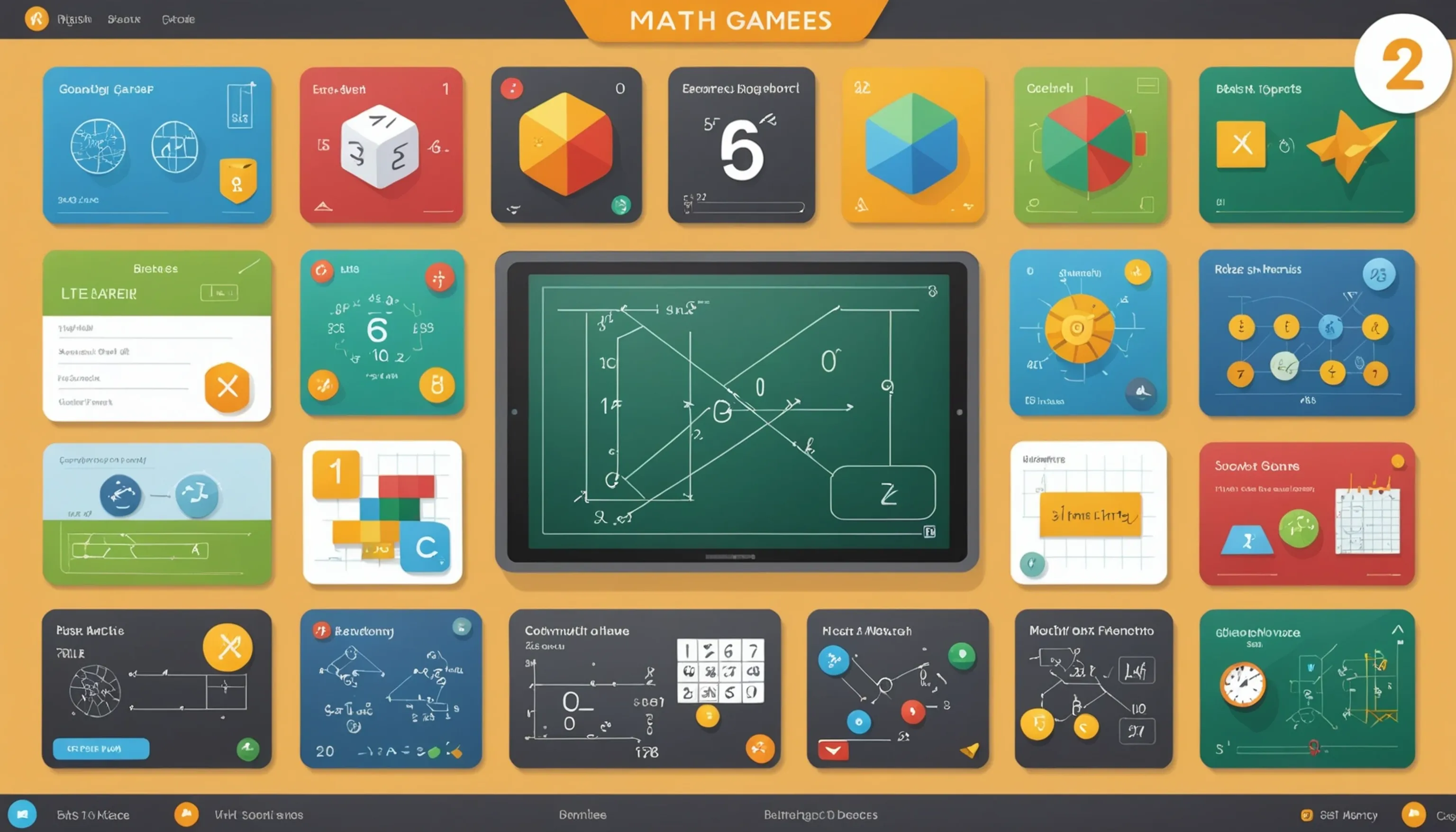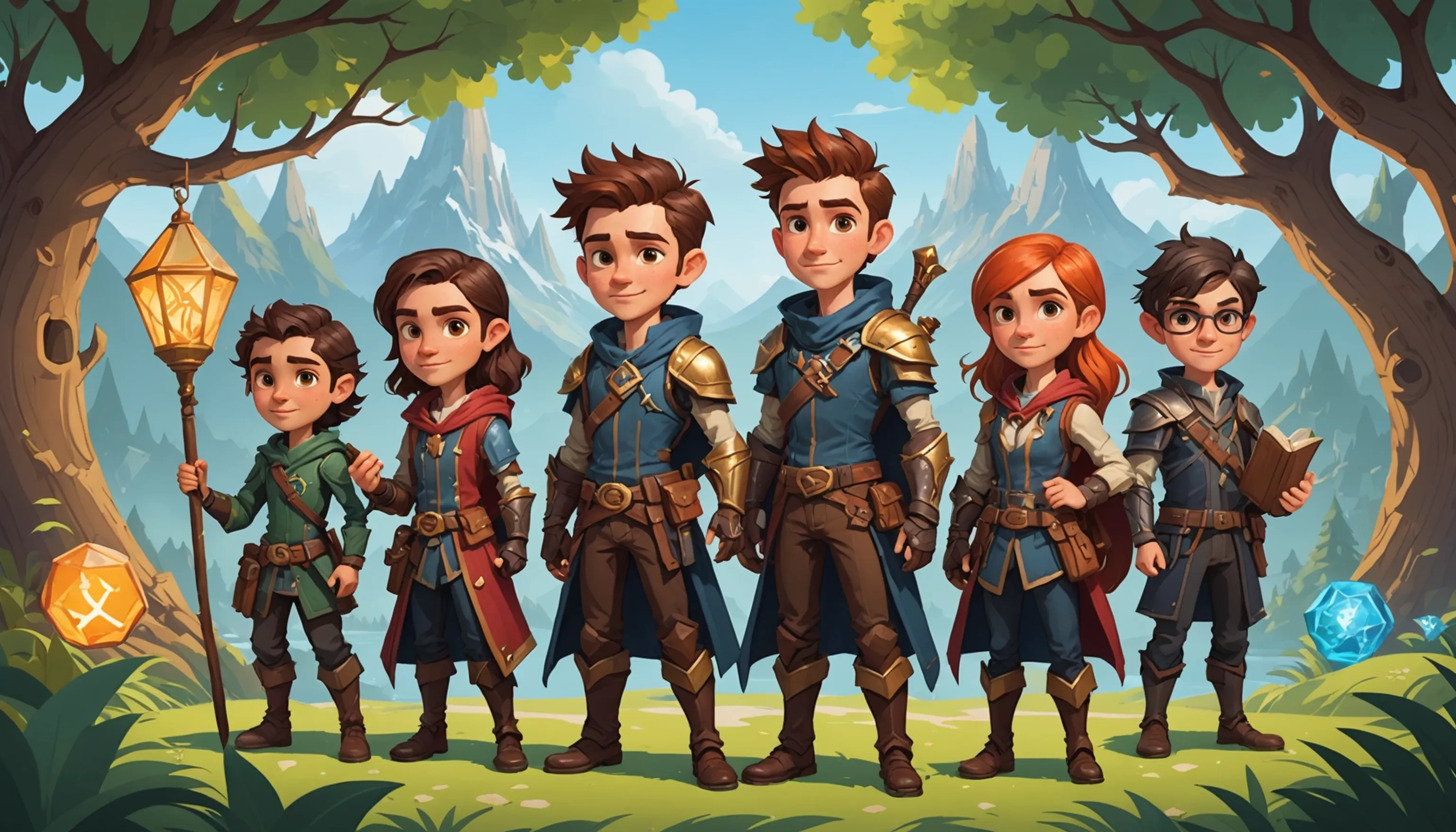Math Games for Teenagers
 HvWHenry van Wagenberg
HvWHenry van Wagenberg
Engaging Math Games for Teenagers
Engaging math games for teenagers can make learning enjoyable and effective. These games often incorporate elements of competition and teamwork, allowing students to develop their math skills in a fun environment. By using engaging formats, like quizzes and interactive challenges, teenagers are more likely to stay motivated and retain information.
Popular games such as Kahoot! and Prodigy Math not only enhance mathematical understanding but also encourage critical thinking and problem-solving. Incorporating these games into the learning process can transform traditional math lessons into dynamic experiences that resonate with high school students.
Why Math Games are Beneficial for Learning
Math games offer a unique and effective approach to learning that benefits teenagers in several ways. First, they create an engaging environment that encourages students to participate actively in their education. This active involvement fosters a positive attitude towards mathematics, which can often be viewed as a challenging subject.
One of the primary benefits of math games is that they promote critical thinking and problem-solving skills. As students navigate various challenges within the games, they learn to analyze situations, make decisions, and develop strategies. This cognitive engagement is vital for mastering mathematical concepts and applying them in real-world scenarios.
Furthermore, math games often incorporate elements of competition, either against peers or against the clock. This competitive aspect can motivate students to improve their skills and achieve better results. Studies show that when students are motivated, their retention of information increases significantly.
Additionally, these games can cater to different learning styles, making math accessible to a wider range of students. Visual learners, for example, can benefit from interactive graphics, while auditory learners may engage better with games that include verbal instructions. Social interaction is another key factor; by playing in groups, students can collaborate, share ideas, and support one another, enhancing their overall learning experience.
In summary, incorporating math games into the curriculum not only makes learning enjoyable but also equips teenagers with essential skills that will serve them well in their academic journey and beyond.

Top Math Games for High School Students
When it comes to enhancing math skills for high school students, several math games stand out for their effectiveness and engagement.
Kahoot! is a popular quiz platform that allows teachers to create fun, interactive quizzes that students can answer in real-time. Its competitive nature keeps learners motivated and eager to participate.
Prodigy Math combines math practice with role-playing game (RPG) elements, making it an exciting way for students to practice math while completing quests and battling in-game characters.
Coolmath Games offers a variety of math challenges and logic puzzles that cater to different skill levels. These games promote critical thinking and problem-solving while providing a fun break from traditional learning methods.
Incorporating these games into the classroom can significantly enhance the learning experience for high school students, making math both enjoyable and impactful.
Kahoot! - A Fun Quiz Platform
Kahoot! is a dynamic quiz platform that has revolutionized the way educators engage students in learning, especially in subjects like mathematics. This interactive tool allows teachers to create quizzes, surveys, and discussions that students can participate in using their smartphones, tablets, or computers. The competitive nature of Kahoot! fosters a fun learning atmosphere where students can showcase their knowledge and skills.
One of the standout features of Kahoot! is its real-time feedback. As students answer questions, they receive immediate results, which helps them understand their strengths and areas for improvement. This instant feedback is crucial for learning, as it allows students to adjust their study habits accordingly.
Additionally, Kahoot! promotes collaboration among students. Players can compete individually or in teams, encouraging communication and teamwork. This aspect is particularly beneficial in a high school setting, where social interaction can enhance learning experiences.
The platform also supports a wide variety of question types, including multiple-choice, true/false, and puzzles, which keeps the quizzes fresh and engaging. Furthermore, educators can easily track progress and analyze results through the platform's reporting tools.
In summary, Kahoot! is not just a quiz platform; it's a comprehensive learning tool that transforms traditional education into an interactive and enjoyable experience. By incorporating Kahoot! into math lessons, teachers can motivate students and reinforce essential concepts in a fun way.

Prodigy Math - An Interactive RPG
Prodigy Math is an innovative educational platform that combines math practice with the engaging elements of a role-playing game (RPG). Designed for students in grades 1 through 8, Prodigy immerses players in a fantasy world where they can embark on quests, battle in-game monsters, and earn rewards while mastering essential math skills. This unique approach transforms traditional math learning into an exciting adventure, making it particularly appealing to teenagers.
The game adapts to each student's skill level, offering personalized math problems based on their current understanding. This ensures that learners are constantly challenged without feeling overwhelmed. With over 1,400 math skills covered, students can progress through a comprehensive curriculum that aligns with educational standards.
In Prodigy Math, students can create their avatars and explore various in-game environments, which encourages them to remain engaged for longer periods. As they complete math challenges, they earn in-game currency that can be used to customize their characters or unlock new areas of the game.
Moreover, Prodigy Math provides teachers and parents with valuable insights into student progress through detailed reports. These analytics help track individual performance and identify areas that may require additional focus. By integrating gameplay with math practice, Prodigy Math not only makes learning enjoyable but also equips students with the skills they need to succeed academically.
Coolmath Games - A Variety of Math Challenges
Coolmath Games is a popular online platform that offers a wide array of engaging math challenges and brain teasers designed to make learning math enjoyable for teenagers. The website features a variety of games that not only entertain but also reinforce essential mathematical concepts such as logic, strategy, and problem-solving skills.
The games on Coolmath Games are categorized into different genres, including puzzles, strategy games, and skill-based challenges. This variety allows students to choose games that align with their interests, making it easier to engage with math in a fun way. For example, games like Math Lines and Run require players to apply mathematical reasoning and quick thinking to progress through levels, fostering a deeper understanding of math concepts.
One of the key benefits of Coolmath Games is its accessibility. The platform is free to use and requires no downloads, making it easy for students to play anytime, anywhere. Additionally, the games are designed with a focus on logic and strategy rather than rote memorization, which encourages critical thinking.
Moreover, Coolmath Games is not just about individual play; it can be utilized in classroom settings to promote collaborative learning. Teachers can introduce specific games as part of their math curriculum to encourage teamwork and friendly competition among students. Overall, Coolmath Games serves as a valuable resource for making math fun, engaging, and accessible for high school students.
How to Incorporate Math Games into Learning
Incorporating math games into learning can enhance student engagement and understanding. Start by identifying appropriate games that align with the curriculum, such as Kahoot! for quizzes or Prodigy Math for interactive practice. Schedule regular game sessions, either in class or at home, to maintain excitement around math.
Integrate games into daily lessons, using them as warm-up activities or review sessions. Encourage teamwork by organizing friendly competitions, which can foster collaboration among students. Lastly, utilize online platforms that provide analytics to track progress, ensuring that each student benefits from the gaming experience.
Setting Up a Math Game Night at Home
Setting up a math game night at home can be a fun and educational way to engage teenagers in learning while spending quality time together. To get started, gather a selection of math games that cater to different skill levels and interests. Options can include board games like Prime Climb or card games such as Math Dice, as well as digital games accessible on tablets or computers.
Next, create a comfortable and inviting space for the game night. Arrange seating and ensure there’s enough lighting for everyone to see the game materials. Set up snacks and drinks to keep the atmosphere relaxed and enjoyable. Involving teenagers in the preparation process can also make them more invested in the event.
To make the night more engaging, consider adding a competitive element. You could set up teams and keep track of scores throughout the evening, offering small prizes for the winners. This encourages teamwork and friendly rivalry, making math more engaging.
Additionally, incorporate breaks between games to discuss strategies or review concepts encountered during gameplay. This not only reinforces learning but also allows everyone to share their thoughts and experiences. Finally, encourage feedback from participants on which games they enjoyed most, so you can plan future game nights around their preferences.
By making math fun and social, you’ll create a positive learning environment that encourages teenagers to embrace mathematics beyond the classroom.
Using Online Resources for Math Games
Utilizing online resources for math games can significantly enhance learning for teenagers by providing access to a variety of interactive and engaging platforms. Here’s how to effectively use these resources:
- Identify Suitable Websites: Start by exploring reputable websites that offer math games, such as:
- Kahoot! - Interactive quizzes that make learning fun.
- Prodigy Math - An RPG-style game that adapts to student skill levels.
- Coolmath Games - A variety of logic and strategy games to reinforce math skills.
- Set Clear Learning Objectives: Before diving into games, establish specific learning goals. This could include mastering a particular math concept or improving problem-solving skills.
- Incorporate Games into Study Sessions: Use math games as a warm-up or a fun break during study sessions. This keeps motivation high and reinforces concepts learned in class.
- Encourage Competition and Collaboration: Many online platforms allow for multiplayer options, promoting teamwork and friendly competition. Organize challenges where students can compete against each other or work in teams.
- Track Progress: Utilize the analytics and reporting features available on many platforms to monitor student performance. This helps in identifying areas that may need additional focus.
By effectively integrating online resources into learning, teenagers can benefit from a diverse and engaging approach to mastering math concepts.
